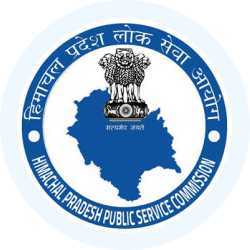HPPSC HPAS (Himachal Pardesh) Exam > HPPSC HPAS (Himachal Pardesh) Notes > HPPSC HPAS Preparation > Brief Geography of District Kangra
Brief Geography of District Kangra | HPPSC HPAS Preparation - HPPSC HPAS (Himachal Pardesh) PDF Download
| Table of contents |

|
| Introduction |

|
| Geographical Location |

|
| Area and Population |

|
| Climate and Rainfall |

|
| Geographical Features |

|
| Historical Evolution |

|
Introduction
Kangra district is a significant region in the Indian state of Himachal Pradesh, known for its rich geography and history. Let’s break down the key aspects of this district, including its location, geographical features, and historical evolution.
Geographical Location
Boundaries and Neighboring Regions:
- To the North, Kangra is bordered by the districts of Lahaul-Spiti and Chamba.
- To the South, it is flanked by the Hamirpur district.
- On the East, Kangra shares its boundary with the districts of Kullu and Mandi.
- To the South-West, it is adjacent to Una district.
- To the North-West, Kangra borders Gurdaspur in the state of Punjab.
Area and Population
Total Area:
- Kangra district covers an area of 5739 square kilometers, which constitutes approximately 10.31% of the total area of Himachal Pradesh.
- It ranks as the fourth largest district in the state in terms of area.
Population:
- With a population of 1,507,223, Kangra is the most populous district in Himachal Pradesh, accounting for 21.98% of the state’s total population.
Climate and Rainfall
- Monsoon Impact: The Kangra Valley is positioned at the convergence of the Eastern and Western monsoons. This geographical setup leads to significant rainfall in areas such as Dharmshala and its surrounding regions.
Geographical Features
The Dhauladhar Range:
- Originates from the right bank of the Beas River in the Kullu district.
- It delineates the boundary of Kangra district with Kullu and stretches down to a point below Sari Pass.
- The range continues into the Bara Bhangal area and runs parallel to the Hathi Dhar, which separates Chamba from Kangra.
Paprola Range:
- This range separates the Bir-Bhangal region from the Kangra Valley.
- Upon crossing the Binwa River, it extends into the Mandi district where it is referred to as Sikandar Dhar.
The Beas River:
- The Beas River originates from the Pir Panjal range near Rohtang Pass (3978 meters above sea level).
- Binwa, a tributary of the Beas, rises near Baijnath and merges with the Beas above Sandhol.
- Neugal River joins the Beas River across from Tira Sujanpur.
- The Chakki River acts as a boundary between Kangra district and Pathankot in Punjab.
Historical Evolution
Past Boundaries:
- Until 1960, Lahaul-Spiti was part of Kangra district.
- Kullu was a Tehsil (a subdivision) of Kangra district until 1962.
Formation of the District:
- Kangra was officially designated as a district of Himachal Pradesh on November 1, 1966, following recommendations by the Shah Commission.
- The current configuration of Kangra district was established on September 1, 1972, when Una and Hamirpur were separated to form independent districts.
The document Brief Geography of District Kangra | HPPSC HPAS Preparation - HPPSC HPAS (Himachal Pardesh) is a part of the HPPSC HPAS (Himachal Pardesh) Course HPPSC HPAS Preparation.
All you need of HPPSC HPAS (Himachal Pardesh) at this link: HPPSC HPAS (Himachal Pardesh)
FAQs on Brief Geography of District Kangra - HPPSC HPAS Preparation - HPPSC HPAS (Himachal Pardesh)
| 1. जिला कांगड़ा की भौगोलिक स्थिति क्या है? |  |
Ans. जिला कांगड़ा हिमाचल प्रदेश के पश्चिमी भाग में स्थित है। यह जिले की सीमाएं उत्तर में मंडी, पूर्व में कुल्लू, दक्षिण में चंबा और पश्चिम में पंजाब राज्य से मिलती हैं। कांगड़ा घाटी, जो कांगड़ा जिले का एक प्रमुख हिस्सा है, अपने प्राकृतिक सौंदर्य और हरे-भरे पहाड़ों के लिए जानी जाती है।
| 2. कांगड़ा जिले की प्रमुख नदियाँ कौन-सी हैं? |  |
Ans. कांगड़ा जिले में कई प्रमुख नदियाँ बहती हैं, जिनमें मुख्य रूप से ब्यास और चंद्रभगा नदियाँ शामिल हैं। ब्यास नदी इस क्षेत्र के लिए जल स्रोत का महत्वपूर्ण हिस्सा है और इसे कांगड़ा घाटी की जीवन रेखा माना जाता है।
| 3. कांगड़ा जिले की जलवायु कैसी होती है? |  |
Ans. कांगड़ा जिले की जलवायु में गर्मियों में हल्की गर्मी और सर्दियों में बर्फबारी होती है। यहाँ का तापमान गर्मियों में 25 से 35 डिग्री सेल्सियस तक बढ़ सकता है, जबकि सर्दियों में यह 0 डिग्री सेल्सियस के नीचे भी चला जाता है। वर्षा का अधिकांश हिस्सा मानसून के दौरान जुलाई से सितंबर के बीच होता है।
| 4. कांगड़ा जिले में पर्यटन के प्रमुख स्थल कौन-से हैं? |  |
Ans. कांगड़ा जिले में कई प्रसिद्ध पर्यटन स्थल हैं, जैसे कि धर्मशाला, मैक्लोडगंज, कांगड़ा किला, और ज्वालामुखी मंदिर। धर्मशाला और मैक्लोडगंज विशेष रूप से तिब्बती संस्कृति और बौद्ध धर्म के केंद्र के रूप में जाने जाते हैं।
| 5. कांगड़ा जिले में कृषि का क्या महत्व है? |  |
Ans. कांगड़ा जिले की अर्थव्यवस्था का एक बड़ा हिस्सा कृषि पर निर्भर करता है। यहाँ की प्रमुख फसलें चाय, गेहूं, मक्का और फल (जैसे सेब और नाशपाती) हैं। कृषि इस क्षेत्र में रोजगार का एक महत्वपूर्ण स्रोत है और स्थानीय लोगों की जीवनशैली में इसका अहम स्थान है।
Related Searches




















